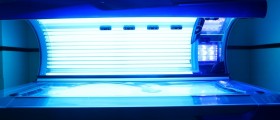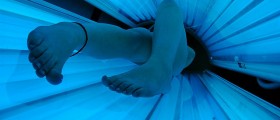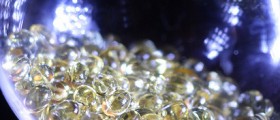
Sunbeds, tanning beds or tanning booths are all expressions which stand for devices which are usually located in tanning salons, enabling people to get a brown tan without actually exposing themselves to the sun and its rays.
These devices use lamps which emit ultraviolet radiation, being 97% UVA and the remaining 3% UVB. The ultraviolet lamps are designed to produce the same tanning effect as the actual sun exposure, allowing one to look as if he/she has spent time sunbathing, even when at any possible part of the year. About 12 to 28 lamps of this type are needed for achieving this effect, even though some tanning beds contain up to 60, each of which is up to 200 watts strong.
Yet, for people who desire to achieve the tanning effect faster, paying much more for this privilege, there are high pressure tanning beds available. These tanning beds are equipped with specially designed quartz lamps, being stronger than most other devices of this type.
However, putting the positive aesthetic effects of tanning beds aside, the ultraviolet radiation one gets exposed to has been proven capable of causing one of the most dangerous forms of skin cancer – melanoma, along with eye damage and premature aging, among other things.
History of Tanning Beds
These devices were introduced to the American market back in the year 1979. Initially, the tanning beds of the time used phosphors, even though these forms of lamps were later swapped for other, less dangerous alternatives. Naturally, the FDA was monitoring the progress and health effects of tanning beds since the first moment these appeared.
Thus, in 1986, the tanning beds had to bear warning signs for possible eye damage and other health problem and to use adequate lamps for achieving the tanning effect. A special law was designed, helping people learn more about these devices through special label signs and information on maximum healthy exposure. Due to the name of their inventor, Friedrich Wolff, most tanning beds of the time were named the Wolff System, bearing a recognizable logo.
Until today, tanning beds have undergone but small technical and aesthetic improvements, remaining basically the same. Most of the evolution was concentrated on the development of the lamps, even though the ones used today still contain phosphors and are fluorescent. However, many types of these lamps contain special UVC and UVB filters which decrease the potential damage to the skin.
Benefits and Risks
Even though tanning beds are usually connected to controversy and potential harm, they can also provide several benefits for the human body. However, for this to be so, one needs to use these devices properly and carefully.
Several researches carried out by the WHO, the European Union, the US Department of Health and Human Services and others, found out that many people experience a mood boost after undergoing a tanning session in tanning beds. Even though many experts have claimed that this is the potential culprit behind the development of tanning addictions, none of them have actually proven this. Thus, one positive aspect of tanning beds, apart from the obvious aesthetic one is the rise in endorphins.
Many tanning salons present tanning beds as a healthier alternative to the harmful effect of sun exposure. Yet, this information is not to be taken lightly. Namely, people need to protect their skin well before stepping inside these devices, using a sun protection cream, even if they already have a base tan. After all, both the FDA and the FTC do not allow words such as “safe” and “safer than” to be used together with tanning beds.
Also, another jack in the sleeves of tanning bed industry is the common claim that these tanning units help our body generate vitamin D. However, taking the risks involved in this form of exposure, you are advised to obtain vitamin D elsewhere, through supplements like foods and drinks. On the other hand, spending about 10 minutes in the natural sunlight, three times a week, will grant you all the vitamin D you need. Moreover, for this to be possible, you do not even need to actually sunbather. Rather, just expose yourself to the healthy outdoors.
As for the risks related to tanning beds, cancer is the most dangerous one, forcing many salons to ban persons younger than 18 to use these devices. Basically, teenagers and children cannot fully understand the importance of UVA and UVB protection and, without proper supervision, they can expose their skin to various health risks of tanning beds.
Additionally, people who do not use goggles while spending time in tanning beds, risk suffering from eye damage or developing eye diseases.
Finally, allergies, premature aging and addictions are reasons enough for tanning beds to be used scarcely and carefully.
Tanning Beds and Young People
Apart from the reasons mentioned above, children are in a much greater danger when it comes to tanning bed exposure, due to the increased vulnerability of their skin to UV radiation. In fact, melanoma is more likely to affect women aging from 15 to 29 than those who are older. Teenagers do not grasp the dangers of tanning beds and, according to a study carried out in 2002 by the Pediatrics, most children and adolescents believe that it is reasonable to get burned for the sake of tanning, since tanned skin is much more attractive that pale one.
All in all, there are several healthy aspects of tanning beds. However, there are much more unhealthy ones and people need to be very careful when using these devices. Thus, either avoid or use tanning beds by following all the safety precautions and keep your children away from tanning salons.

















Your thoughts on this
Loading...